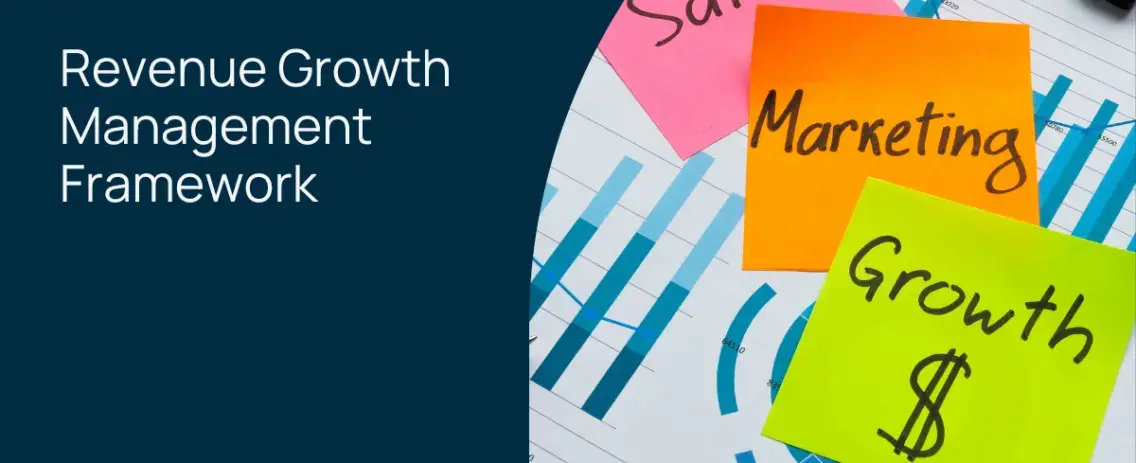
Adapting to volatility: Implementing a Revenue Growth Management framework for CPGs
The world is increasingly volatile, both economically and politically. If the systems and dashboards used by your company aren’t reflecting this, you may have a problem.
Consumer-packaged goods (CPG) manufacturers rely on extended supply chains at one end, and sales networks which reach down into multiple retail markets.
As they are buffeted by economic and geopolitical shocks, CPG pros might be forgiven for constantly changing tack in response to whatever the latest crisis happens to be.
But this distracts them from longer-term concerns. Particularly the need to move from legacy operating models to a revenue growth management framework. This is the route towards a more sustainable business model. One that delivers value to both the CPG manufacturer and its key stakeholders, the consumer and its retail partners.
This article delves deeper into these challenges. It examines the tools and processes that can help CPGs respond and develop a robust RGM approach. But it also describes the mindset changes required to truly deliver on this transition, and where CPGs can look for help in delivering these.
The context of a Revenue Growth Management framework
Very few organizations don’t want to grow revenue. However, there is a critical difference between boosting revenue at all costs, and aiming to grow revenue in a sustainable, well-managed way.
The former might deliver maximum impact in the short term but can leave CPGs exposed in the longer term. Markets might become saturated, supply lines might become stretched, and repeated lowest common denominator promotions will eventually fail to resonate with consumers and retailers. It risks undermining profitability or making it more unpredictable, frustrating shareholders.
Even at the best of times, this approach can leave teams of CPG professionals over-stretched, uncoordinated, and even at odds with each other. In more volatile times, life becomes a succession of short-term sales spurts punctuated by ever more bouts of firefighting.
Revenue growth management aims to develop a secure, sustainable path to predictable revenue and profit growth. It does this over multiple years by making optimal use of the different levers available to CPG companies. These include timely data and the appropriate tools to exploit it. As well as the best efforts of forecasters and marketers, sales teams, and promotion specialists. And it doesn’t neglect the contribution of other teams, from finance to IT.

The challenging journey towards a Revenue Growth Management framework
At a high level, it’s easy to see the appeal of a revenue growth management framework.
But by examining the practicalities of implementing RGM, we can see there are multiple potential blockers to its adoption.
RGM assumes a CPG can leverage five key areas: promotion management, pricing, trade spend, brand positioning, and mix optimization.
Get these all working in harmony, and organizations can coordinate, fine tune, and optimize strategies. It will also ensure budgets are used to produce the maximum impact. All in a balanced, sustainable way.
The organization also stands to gain from improved forecasting and revenue optimization, and sustainable revenue and profit growth in both the short and longer term.
But potential impediments to this are clear. It assumes the free flow of reliable data, whether for forecasting future business and building programs accordingly, or for optimizing current plans. That includes internal data but should also include external and third-party data. We are looking to capture the potential impact of broader events here after all.
Bespoke or legacy tools can slow or even choke the flow of data around the organization. This means forecasts are based on partial or out of date information, making them little more than guesswork. Strategies and programs are based on incomplete forecasts and hunches drawn from experience, rather than robust models.
More broadly, coordination and optimization are difficult when different teams are working with disparate data. And when they cannot actually see what their colleagues are doing.
This sort of infrastructure might just suffice in a predictable environment, when each new quarter, or year, is met with a revised version of what the teams ran the previous period. At least in the short term.
But when rivals are awash with up-to-the-minute data and the tooling to exploit it, less forward-looking companies can be left stranded. They will tend to make decisions in reaction to short-term, immediate problems. But these are likely to be uncoordinated and less targeted, blunting their impact.
Little space is left for longer term planning, even if teams had the requisite data and tools to do so.

How to move forward
How can CPGs get past these blockers, and develop their own revenue growth management framework?
The devil is in the details. And in today’s hyper volatile world, the details change all the time. Functional teams need tools that help them manage and navigate this.
CPGs need to ensure their teams have systems that combine current internal data as well as relevant data from third parties and retail partners. This gives them the ability to discern what is really happening in their markets. Combined with cutting-edge, AI-powered analytics, it will give more insight into past and current performance. Moreover, it will also enable more accurate forecasting.
This contributes to a single view of the truth, allowing different teams to work with common data and see how their plans, actions and optimizations impact other parts of the business. That could be coordinating trade promotions and marketing activities to ensure one reinforces the other. Or it could be analyzing how different pricing strategies feedback through the entire supply chain.
But changing tooling is not enough. Moving to a revenue growth management framework also requires a fundamental mindset change.
The right technology can free up individuals and teams, not least by easing the cognitive load and unproductive toil imposed by manual systems. But they must consciously grasp that freedom and get the most out of the tools.
That includes thinking about how to react to short-term shocks. Whether that’s a retail partner being taken over, or a particular promotion being overtaken by events that have impacted consumers.
It also means longer term thinking, and moving to a scenario planning approach where CPG teams evolve and test multiple alternative outcomes. That means that during negotiations with partners, account or promotion pros can present multiple options. But it also means they are better able to react when the unexpected happens.
The organization as a whole needs to take a broader view of what success means. This ranges from examining internal processes that block progress and innovation and ensure that teams can align and collaborate. Simply explaining what new tools can enable and encouraging staffers accordingly.
But it also means taking a broader view of what success means, and what it takes to achieve it. This can be characterized as a trifecta approach, which explicitly aims to maximize value for the CPG manufacturer, and its retailers and consumers.
This might seem like a monumental effort. But with the right technology, and the right external expertise and experience, it enables companies to reengineer themselves to navigate an uncertain future.
How Visualfabriq helps you build your Revenue Growth Management framework
Visualfabriq’s software gives CPGs the essential tools to reengineer their processes and move towards a revenue growth management model across their business.
It puts a wide range of data and cutting-edge AI-driven analytics into the hands of sales teams, promotion specialists, trade spec professionals, and forecasters. They benefit from deeper insight into their programs and investments, as well as more accurate forecasts.
They also gain a holistic view of the entire business, as do finance and the C-suite. Optimization of activities across specialisms becomes easier. A shift to scenario planning speeds negotiations with retailers and means less surprises in the longer term. Senior management gains a holistic view of the entire business, while being able to drill down through the business to analyze the effect of individual promotions, or the factors affecting business in a specific region.
But Visualfabriq also brings an unrivaled ecosystem of deployment and education partners and VARs.
These have deep experience and knowledge of helping CPGs deploy Visualfabriq and augmenting it with other value-added services. But they are also well versed in the change management and optimization needed to fully leverage the platform. This will help you develop a revenue growth management framework that fits your organization and your future.
Takeaways
Current volatility emphasizes the need for consumer packaged goods business teams to be agile, and able to plan for and adapt to multiple future scenarios.
This in turn reinforces why CPG firms looking for a sustainable future need to adopt a revenue growth management framework.
Achieving this will require retooling to replace legacy systems, enable automation, and give staffers a single view of the truth. But this also requires a new mindset within CPGs, with sales, forecasting, promotion, and marketing teams collaborating to make maximum use of data and to innovate in concert with retail partners to benefit consumers.
Visualfabriq provides the technological tools to allow CPGs to do this, and, together with its partners, the deep knowledge and experience to help CPGs develop the necessary mindset to excel.
To learn how Visualfabriq and its expert partner network can help your shift to revenue growth management, get in touch here.

.png)
.png)
